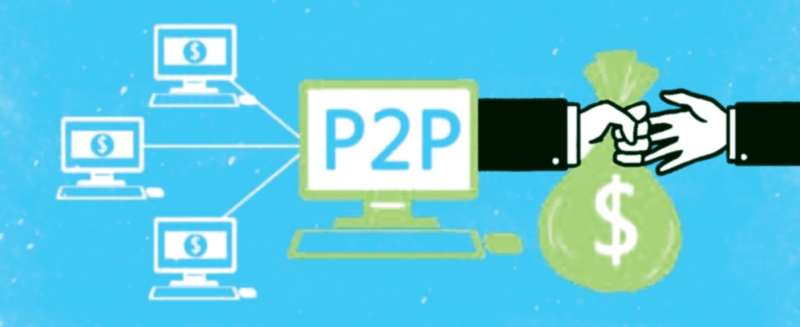Compared to traditional banks, P2P lenders enjoy lower operating costs, minimal regulatory constraints and offer better services.
--BY HOM NATH GAIRE
Peer-to-Peer lending is one of the latest products developed to reduce the costs of lending and borrowing in the financial market. It is commonly abbreviated as P2P lending and represents one of the 7-Is of the financial market, i.e. Innovation, and is one of the most efficient mechanism of matching the needs of lenders directly with borrowers without involving traditional financial institutions.
The 2008 global financial crisis made P2P lending more popular as opposed to the over-leveraged and bad debt bearing global banking system. The crisis compelled banks to be cautious about riskier borrowers including Micro, Small and Medium Enterprises (MSMES). To serve this segment, several tech-driven platforms emerged, which utilised big data and advanced analytics to connect borrowers with lenders. Compared to traditional banks, P2P lenders enjoy lower operating costs, minimal regulatory constraints and offer better services. P2P lending has thus been able to facilitate the lenders and borrowers and to reduce the costs of financial transactions.
Since P2P lending agencies provide services entirely online, it has been possible for them to run the business with lower overheads enabling them to provide the service more cheaply than traditional financial institutions. As a result, lenders often earn higher returns from their lending compared to savings and investment products offered by traditional banks, whereas borrowers are able to borrow funds at lower interest rates. In the meantime, P2P lending companies have also been making money from the fees taken from match-making services and the platform provided to the lenders and borrowers.
Characteristics of P2P Lending
As the P2P lending business does not fit into any of the traditional banking and financial institutions it is categorised as an alternative financial service institution. It does not take deposits from the surplus units neither invests it into the deficit units nor provides insurance services. The common characteristics of P2P lending include:
• A common business model which is conducted for profit
• Based on common understanding or prior relationship between lenders and borrowers
• Customised to provide one-to-one intermediary services
• No physical place is needed (only online based)
• Keep the credit score of borrowers enabling lenders to choose a credible borrower
Although the loans provided through P2P lending are not normally protected by government or insurance companies there can be protection funds by the service providers like Zopa and RateSetter in the UK. Loans under this mechanism are considered as marketable securities that can be transferred to others. However, either for debt collection or profit, all P2P agencies do not provide transfer facilities. In such cases, facilities are provided but the costs may be very high.
Services offered by P2P agencies are:
• Robust online platform which enables borrowers and lenders to identify the suitable counterparty who meet their respective criteria
• Interest rate determination models
• Keeping credit track record and rating credit worthiness of borrowers (eKYC)
• Electronic payments through internet banking
• Assets restructuring (management) and loan recovery facility
• Consultancy services
• Market intelligence
Difference Between P2P Loan and Bank Loan
Although P2P lending agencies and traditional banks perform the same role of mobilising financial resources from surplus units to deficit units there are various fundamental difference between them. Some of the major differences are listed below.
Collateral
Traditional bank loans cannot be taken without adequate collateral or a government guarantee. But many P2P loans are collateral free personal loans, though some of the largest amounts are lent to businesses are secured. Secured loans are sometimes offered by using precious assets such as jewellery, watches, fine art, buildings, aircraft and other business assets as collateral.
Borrowers
The majority of borrowers of the traditional banks are big businesses, corporates and individuals who have very good cash flows or sources of income to repay the loan. However, the majority of P2P loan are made to individuals and charity organisations, although some portion of loans goes to companies or businesses as well. Common forms of P2P lending include student loans, commercial and real estate loans, payday loans, as well as secured business loans for leasing and factoring.
Interest Rate
The interest rates of traditional bank loans are generally determined by the market forces of demand and supply of liquid funds. However, the interest rates of P2P loans are set by lenders who want to compete for the lowest rate on the reverse auction model. Sometimes, the interest rates are determined by the intermediary company on the basis of an analysis of the borrower's credit scores.
Risk
The loans of traditional banks are either guaranteed by the collateral or by the government. But lender’s investment in the P2P loan is not protected by any government guarantee. Thus, these are considered more risky loans than the traditional ones. Under P2P lending some lenders try to mitigate the risk of any default by choosing a borrower who has a higher credit score. Similarly, they may try to mitigate total risk by diversifying their investments among different borrowers.
Some P2P lending agencies maintain a separate refinance fund, such as Rate Setter's Provision Fund, which pays lenders back in the event the borrower defaults. In the meantime, bankruptcy of the lending agencies that facilitated the loan may also put a lender's investment at risk, as has happened in 2015 in the case of Trust Buddy.
Regulation
Traditional bank lending is well regulated. The central banks of the respective countries are responsible for regulating the banking business. But the P2P lending business of the United Kingdom (UK) has just got a regulator, active since April 1st 2014- the Financial Conduct Authority. Similarly, United State of America (USA) only started regulating P2P lending business since 2012 through the JOBS Act. The regulation requires P2P lenders to have minimum operating capital requirements, meet client money requirements and adhere to a disclosure based regime. In other countries, it is still operating in an informal way without regulations.
Operating Costs
The main difference between traditional banks and P2P lending agencies is cost. As P2P lending organisations are lean and operating through the internet, they are able to provide a cheap way to deliver lending is a much cheaper way in comparison to traditional banks. For example in the US banks have to pay for computers, websites, thousands of professional employees, branches in thousands of cities including vaults, electricity, tellers.
On the other hand, P2P lending companies pay for just computers, websites, less than 1000 professional employees and fewer locations.
Benefits to Borrowers and Lenders
Unlike traditional lenders, there are no penalties or higher interest rates to a borrower who wants to use funding for what some might consider more risky reasons like consolidation of debts or to pay off medical expenses.Why has this industry grown at such a rapid rate? Put simply, it offers both borrowers and lenders significant advantages over the traditional banking model.
Borrowers have various reasons for Choosing P2P Lending. Some of which are listed below.
Low Interest Rates
Like we mentioned earlier, since Lending Club and Prosper both operate through websites, they can offer their borrowers very low rates on their loans. For example, most borrowers get a rate five percent lower than their credit card. This rate can mean thousands and thousands of dollars in savings over time, just by clicking a few buttons and moving your debt to a peer to peer loan.If the traditional bankers do this, most of them would not be able to run the bank.
Fixed Rate
Unlike a credit card, these loans have a fixed-rate. What that means is the rate will never go up, even if the installment payment is delayed sometimes. So if Lending Club or Prosper offers a nine percent interest rate while lending the money, it will remain the same until the whole loan is repaid.
Simple and Fast Processing
During the old days going to the bank was a full day affair. Even a few years ago in countries like Nepal one might spend all day going to the bank in town and arriving home after dark.Today, going to a bank can still be a hassle. But thanks to technology and P2P lenders, the procedure of getting loans has been shortened to a few hours making payment possible on a click.
Nominal Fees and No Prepayment Penalty
P2P loans have much lower service charges than most other options. In case of late payment, the fee is nominal. If one wants to pay the loan off early, it is possible for free; this has always been a great option to avoid interest.
Reasons for Choosing P2P Lending by Lenders
Not all of the benefits apply to borrowers in the P2P lending model; lenders also win by getting returns above market (saving) rates and spreading their risk through a variety of transactions.
Spreading Risk
With P2P lending, lenders are not big institutions and the majority of loans disbursed are much smaller than that of the traditional banks. Investors are thus attracted to an alternative to the insignificant interest rates provided through a traditional bank or looking for an alternative to the highly volatile (risky) stock market.
High Returns
Normally P2P lenders earn an average return of around 10 percent depending on the loan type(s) and the term. A 10 percent return is certainly very attractive in comparison to the returns from deposits with traditional banks. Especially it is diversified into large pools of pre-qualified borrowers.
Selected Borrowers
P2P lenders categorise the borrowers for the lenders in their network and ensure that they pass identity verification. Borrowers are provided interest rates and terms associated with the risk related to terms of the loan, credit score, and other related factors in their funding algorithm. Lenders choose only to invest in the loans that they are interested in. If they don’t like someone that is accumulating credit card debt, they don’t invest. Lenders are free to choose the borrowers that match their preferences.






















